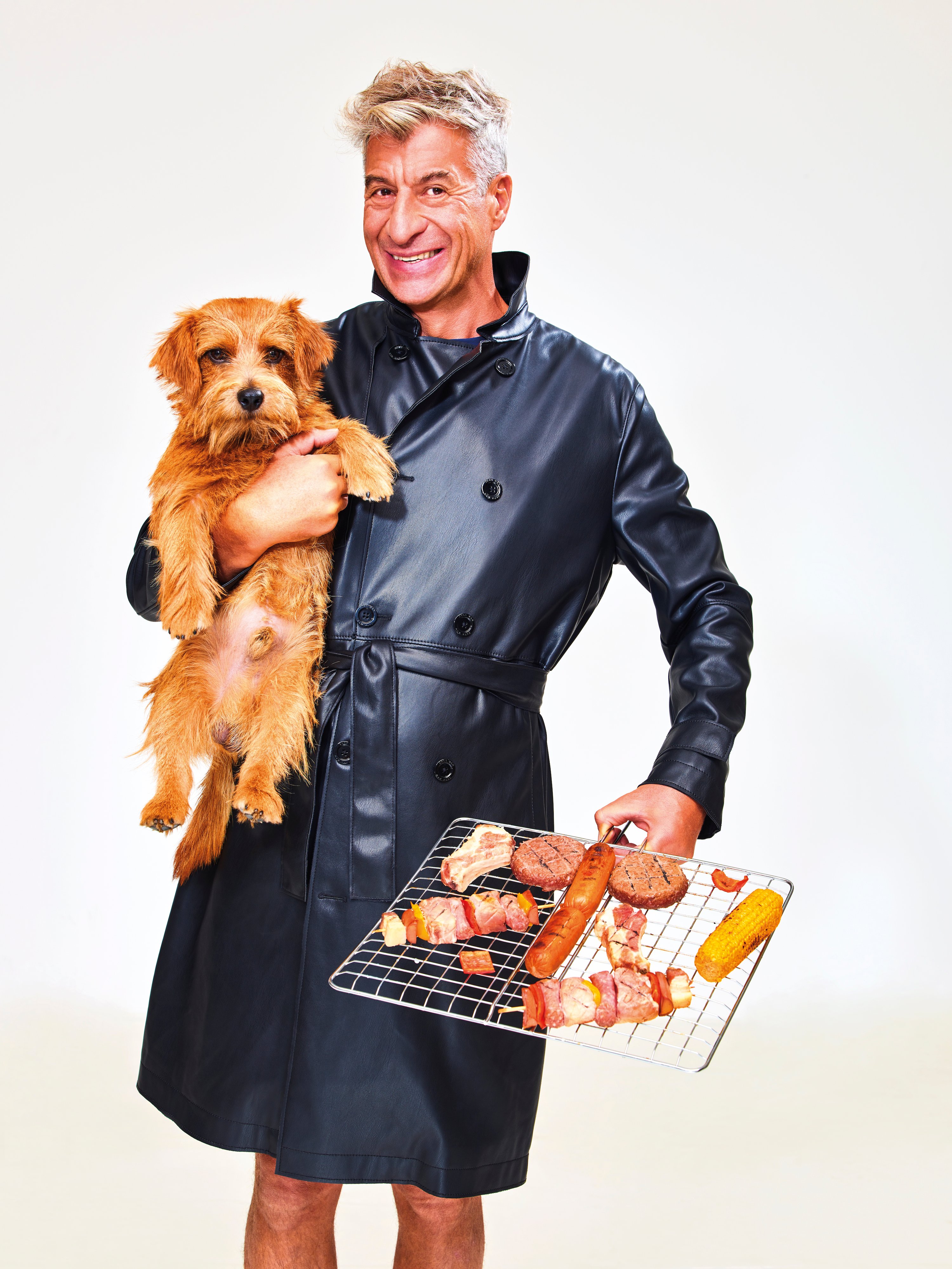
This series, “What I’ve Learned About Copies,” is a collection of small factoids or tidbits of random information with no effective use that I happened to encounter during the research for the exhibition “The Artist Is Present,” an upcoming show in Shanghai that questions the most sacred principles of art in the modern era: originality, truth, and identity. How can this trinity be reached through the act of repetition, and how can originals themselves be preserved through copies? Rule number one: Truth is a matter of faith.
Nine different dogs played Lassie the dog, and they were all male. This is a brief story of gender-related discrimination.
What You Didn’t Know About Lassie, the Dog Who Captivated Hollywood
Portrait of America’s favorite collie, Lassie and his family, from the CBS primetime series ‘Lassie,’ huddled together on a picnic bench, 1954. From left, Pal (the original Lassie), young Laddie, Lassie, old Laddie and Lassie, Jr. These 5 collies, all male, collectively portrayed the canine hero throughout the show’s 22-year run (the first 17 of which were on CBS). (Photo by CBS Photo Archive/Getty Images)
When the author Eric Knight wrote “Lassie Come Home” as a short story for The Saturday Evening Post, he couldn’t have anticipated the attention and success it would come to enjoy. Turned into a novel of the same name in 1940—two years after it was originally published—the adventures of Lassie the dog captured the imagination of many generations of young fans, thanks to an impressive array of media that spanned from storybooks and comics to animation, television shows, movies, radio programs, and even toys.
According to the original story, Lassie is a female Rough Collie dog, but not everybody knows that Lassie was never played by a female dog. From MGM’s first film in 1943 to the last episode of the famous TV series, nine different dogs played Lassie, and they were all male. A female Collie was originally cast in the role, but the producers had to replace her with a male when she began to shed excessively during the production, which was shot during the summer months.
Even though artificial means were developed some years later that could have solved the shedding issue, the role continued to be played by male dogs, mainly coming from the same family. The first Lassie, a male Rough Collie named Pal, was first rejected for the main role because he was a male, but was hired to do stunts and eventually impressed the filmmakers so much that they gave him the role in a full-time capacity.
He enjoyed a long life of 18 years and played Lassie in seven feature films and two TV pilots. In the series, he once pulled double duty, playing both the mother and son roles.
After his retirement in 1954, Pal lived with his trainer, Rudd Weatherwax. From the day Pal died, in 1958, Rudd would never again watch an MGM Lassie movie.
Following Pal’s long service, he was replaced by his son, Lassie Junior, who played the part until 1959, when he retired due to becoming ill with cancer. His son, Spook, took over briefly but was never comfortable on set, so another of the breed, Baby, took over and worked on the show for six years before passing away at the age of eight (while all the other Lassies lived to be at least 17). Mire took over from 1966 to ’71, followed by Hey Hey from 1971 to ’73.
Lassie arrives at the Television Academy’s 70th Anniversary Gala on June 2, 2016, in Los Angeles, California. Photograph by Gabriel Olsen/FilmMagic/Getty images.
Lassie ran from 1938 until 2006, when Lassie, the remake of the first original movie, Lassie Come Home (1943), was released. A tale, a book, 11 movies, 19 seasons of TV series, a radio program that was broadcast for three years, and many awards—even a star on the Hollywood Walk of Fame—are all the manifestation of “her” fictional life as an individual female canine.
Lassie’s positive message of love and loyalty was so comforting that no one would ever ask about the dog’s identity, or even about her health after 30 years of jumping and running. How disturbing could be to know that everybody’s beloved dog was not one, but nine?
Traumatized fans of the Many-Faced Dog, check your knowledge here.
“The Artist Is Present” is a show curated by the artist Maurizio Cattelan in collaboration with Gucci creative director Alessandro Michele, taking place at Shanghai’s Yuz Museum from October 10th to December 16th.
Photo: Ronan Gallagher; from an image by Marco Anelli©️2010